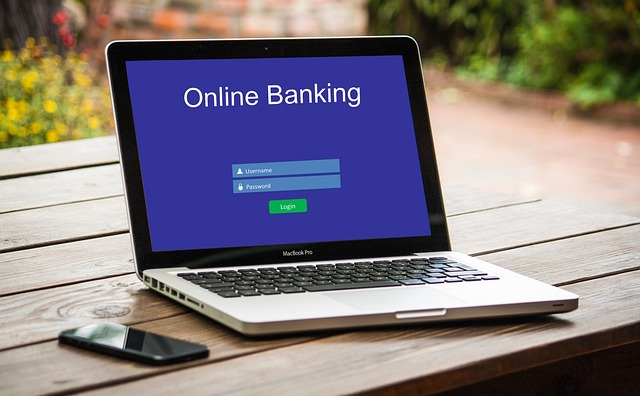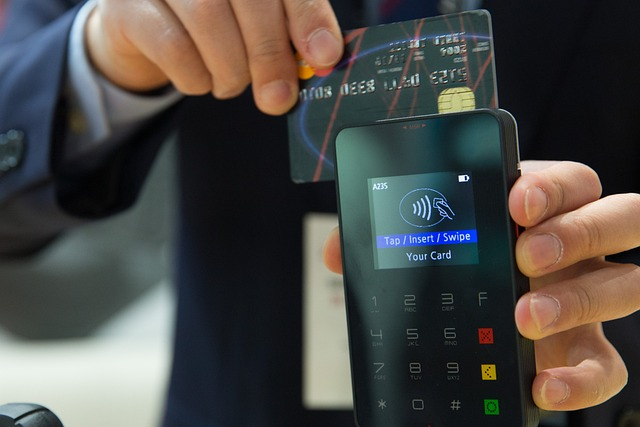In today’s fast-paced world, digital banking has rapidly gained popularity, transforming the way we manage our finances. The convenience of accessing banking services from the comfort of our homes or on-the-go has made it an attractive option for millions of people worldwide. Are you ready to explore the fascinating world of digital banking? Join us as we delve into the benefits, trends, and various types of digital banking providers in 2023.
In this journey, we’ll uncover the differences between online and mobile banking, the advantages of digital banking, and the diverse range of digital banking providers. We’ll also take a look at the emerging trends in digital banking and share insights on choosing and opening a digital bank account. So, let’s embark on this exciting exploration and discover how digital banking is reshaping the financial landscape in 2023.
Short Summary
Digital banking offers convenience, cost savings and personalized services to customers.
Mobile banking app adoption is on the rise with increased security measures being implemented by online banks.
Choosing a digital bank account involves assessing factors such as FDIC insurance, fees and features for a smooth transition into digital banking.
Understanding Digital Banking

Digital banking is an innovative approach that combines online and mobile banking services, allowing customers to access the same services previously available only at a brick-and-mortar bank branch. Financial institutions have embraced digital banking to cater to the ever-evolving needs of their tech-savvy customers, offering a seamless and convenient banking experience.
Digital banks utilize artificial intelligence (AI) to streamline back-end processes, such as administrative duties and data processing, further enhancing their services. Digital banking comprises two primary components: online banking and mobile banking. Online banking refers to accessing banking services through a bank’s website, while mobile banking is accessed through a dedicated app on a computer or mobile device.
Together, these digital platforms provide customers with round-the-clock access to banking services, enabling them to manage their finances anytime, anywhere.
Online Banking
Online banking enables customers to manage their bank accounts and conduct transactions through a bank’s website from a computer. This digital banking option offers a streamlined experience, as well as reduced or no fees and comparatively higher interest rates. By partnering with larger banks, online banks can access essential services such as checking and savings functions and obtain insurance to safeguard depositors.
However, online banking is not limited to banking services alone. Online banks, such as Ally, provide an array of services. These include brokerage accounts, loans, and credit cards. All these services are available online. By lowering operational costs, online banks can facilitate greater access to banking services, providing significant benefits to unbanked and underbanked individuals.
Mobile Banking
Mobile banking refers to using an app to access banking features on smartphones or tablets. It is an easy and efficient way to keep track of one’s finances. Mobile banking apps are growing in popularity, offering a wide range of unique features that cater to the needs of tech-savvy customers. For instance, Citi’s digital money management app provides users with the ability to view recurring charges, a financial wellness score, prediction of future funds, view accounts at other banks, and personalized financial insights.
U.S. Bank occupies the top spot in Insider Intelligence’s 2021 Mobile Banking Competitive Edge Survey, exemplifies the rising prominence of mobile banking in the digital banking landscape. With the increasing adoption of mobile banking apps, it’s evident that customers are seeking a convenient and user-friendly way to manage their finances on-the-go.
Advantages of Digital Banking

Digital banking offers numerous advantages over traditional banking, such as convenience, cost savings, and personalized services. As technology continues to advance, these benefits become more pronounced, making digital banking an increasingly preferred approach for customers to manage their finances and for businesses to achieve their objectives.
By providing 24/7 access to accounts and services, digital banking eliminates the need for customers to visit physical branches, thereby offering unparalleled convenience and accessibility. Additionally, the automation of processes reduces operating costs for both banks and customers, while AI-driven personalization strategies enable banks to offer tailored budgeting tools, spending analytics, and savings reminders.
Convenience and Accessibility
One of the most significant benefits of digital banking is the convenience of accessing bank accounts and conducting transactions from any location at any time. Customers no longer need to visit a bank branch in person to manage their finances, as digital banking enables them to do so from the comfort of their homes or while on the go.
Furthermore, digital banking provides 24/7 access to accounts and services, eliminating the need for physical locations. This increased accessibility allows customers to manage their finances more efficiently, saving them time and effort that would otherwise be spent visiting a local branch.
Cost Savings
Automation of processes in digital banking offers significant cost savings for both banks and customers. By eliminating manual processes, minimizing errors, and increasing efficiency, digital banking reduces administrative and office supply costs, which can yield up to 30% savings.
Decreasing operational costs also enables digital banks to provide greater access to banking services, particularly for unbanked and underbanked individuals. This cost-saving benefit, coupled with improved usability, makes digital banking an attractive option for customers seeking a more affordable and efficient banking experience.
Personalized Services
Digital banking harnesses the power of AI to offer personalized services tailored to individual customer needs. AI-driven personalization strategies provide customers with budgeting tools, spending analytics, and savings reminders, enabling them to make informed financial decisions and manage their finances more effectively.
Moreover, digital banks offer unique features such as automated budgeting, spending analytics, savings reminders, and various other tools that cater to the specific needs of their customers. These personalized services help customers make smart financial choices and achieve their financial goals more efficiently.
Types of Digital Banking Providers

There are several types of digital banking providers available to cater to the diverse needs of customers, including traditional banks, neobanks, challenger banks, and nonbank financial institutions. Each type of provider offers its own unique set of services and features, ensuring that customers can find a digital banking solution that best fits their needs.
As digital banking continues to evolve, it’s essential for customers to understand the differences between these providers and their offerings. In the following sections, we’ll explore each type of digital banking provider in more detail, discussing their advantages and disadvantages to help you make an informed decision.
Traditional Banks with Digital Services

Traditional banks with digital services are financial institutions that provide physical and digital banking services. These banks, which include brick-and-mortar banks and credit unions, offer customers the convenience of accessing their accounts and conducting transactions through digital channels while still providing the option of in-person banking at a physical branch.
One key advantage of traditional banks with digital services is the provision of FDIC or NCUA insurance, ensuring the security of deposited funds. This added layer of protection gives customers peace of mind when entrusting their finances to these institutions.
Neobanks
Neobanks are digital-only banks that are licensed to operate as banks, offering competitive interest rates and no-fee structures. These banks are exclusively online-based services, providing customers with a convenient and efficient banking experience without the need for physical branches. Some of the most recognized neobanks include Revolut, Fidor, Simple, N26, and Monzo.
By focusing solely on digital services, neobanks can cater to the needs of tech-savvy customers who prefer managing their finances through digital platforms. Although neobanks may not offer physical branches, their competitive rates and fee structures make them an attractive option for customers seeking a more cost-effective and user-friendly banking experience.
Challenger Banks
Challenger banks are digital-only financial institutions that aim to provide modern financial technology with a focus on customer satisfaction. They typically offer a variety of services through apps and websites, with lower fees and higher rates than traditional banks. Challenger banks target underserved audiences, providing user-friendly and cost-effective alternatives to traditional banks.
Challenger banks are gaining traction. Popular examples include Chime, Varo and Current. These banks demonstrate the rising prominence of digital banking providers that offer innovative solutions tailored to the specific needs of their customers. By offering a range of services that are more user-friendly and cost-effective compared to traditional banks, challenger banks have emerged as a viable option for those who are underserved by the traditional banking system.
Nonbank Financial Institutions
Nonbank financial institutions are entities that provide financial services similar to those of banks, but do not hold a full banking license and are thus not subject to the same regulations. Examples of such institutions include pawnshops, savings and loan cooperatives, capital markets, money markets, venture capital companies, insurance companies, leasing companies, and factoring companies.
While nonbank financial institutions provide financial services without a banking license, they can become a legitimate bank upon meeting the necessary government requirements. Once a nonbank meets the requisite criteria to operate as a bank, they must submit a formal request to the relevant authorities to obtain a banking license and gain approval for their credit and lending services.
Digital Banking Trends in 2023

As digital banking continues to evolve, several trends are emerging that will shape the industry in 2023 and beyond. Increased mobile banking app adoption, heightened security and privacy concerns, and the emergence of niche banking services are some of the trends we can expect to see in the coming years. Staying informed about these trends can help customers make the most of their digital banking experience and ensure they are well-prepared for the future of finance.
In the following sections, we’ll delve deeper into each of these trends, examining their impact on the digital banking landscape and discussing how they may influence customer behavior and expectations in the coming years.
Mobile Banking App Adoption
Mobile banking apps are becoming increasingly popular, with more and more customers turning to these convenient digital platforms to manage their finances. In fact, a 2021 FDIC study revealed that mobile banking is the primary way of banking for 15-24-year-olds, and approximately 43.5% of Americans employ mobile banking as their primary banking approach.
Bankrate’s top picks for mobile banking apps highlight the growing number of high-quality options available to customers. As mobile banking app adoption continues to rise, banks and financial institutions will need to stay ahead of the curve, offering cutting-edge features and services to attract and retain customers in an increasingly competitive market.
Security and Privacy Concerns
As digital banking gains popularity, security and privacy have become top priorities for customers and financial institutions alike. Online banks are taking proactive steps to ensure the protection of their customers and their data, implementing measures such as multi-factor authentication and secure login processes to safeguard accounts and personal information.
In addition, online banks are focusing on providing services tailored to specific causes or consumer groups, such as Valley Bank, which offers accounts for cannabis cultivators and wholesalers, and Limelight Bank, which invests CD deposits in solar panel initiatives. By addressing security and privacy concerns, digital banks can continue to build trust with their customers and foster a safe and secure banking environment.
Niche Banking Services
Niche banking services, such as cryptocurrency and direct investing in stock markets, are becoming more popular as customers seek innovative and personalized financial solutions. Digital banks are well-positioned to capitalize on this trend, offering unique features that cater to the specific needs and preferences of their customers.
For example, digital banks provide the ability to purchase cryptocurrencies and gold, invest in stock markets directly from the banking app, make instantaneous security setting modifications, adjust transaction limits, and enable/disable NFC or magnetic stripe payments.
As the demand for niche banking services continues to grow, digital banks that offer these tailored solutions will stand out from the competition and attract a loyal customer base.
How to Choose and Open a Digital Bank Account

Opening a digital bank account is a similar process to opening an account at a physical branch, with the added advantages of higher yields, lower fees, and no need for local branches. When selecting a digital bank account, it is essential to assess factors such as FDIC insurance, fees, interest rates, available features, and security to ensure that you choose the best option for your needs and preferences.
Once you have chosen a digital bank, the process of opening an account is straightforward and convenient. You can easily link external accounts to fund your new digital account, providing a seamless transition from traditional to digital banking. By taking the time to research and select the right digital bank account, you can enjoy the numerous benefits of digital banking and take control of your financial future.
Summary
In conclusion, digital banking has revolutionized the way we manage our finances, offering a range of benefits, including convenience, cost savings, and personalized services. With the rapid growth of digital banking providers, such as traditional banks with digital services, neobanks, challenger banks, and nonbank financial institutions, it’s more important than ever to stay informed about the latest trends and developments in the industry.
As we move into 2023 and beyond, digital banking will continue to evolve, with increased mobile banking app adoption, heightened security and privacy concerns, and the emergence of niche banking services shaping the future of finance. By embracing these trends and understanding the various types of digital banking providers, you can make the most of your digital banking experience and confidently navigate the ever-changing financial landscape.
Frequently Asked Questions
What are examples of digital banking?
Digital banking services are an important part of managing your financial resources. Examples include setting up a bank account, transferring funds, making withdrawals, and automating many tasks to save on overhead costs.
Other digital banking features include payments, services, and solutions that enable you to manage your finances more efficiently.
What are the risks of digital banking?
The risks associated with digital banking include data security breaches, fraud and corruption, and non-compliance with laws and regulations. All of these risks can lead to severe financial losses for customers and banks alike, so it is important to take all necessary steps to ensure the safety of your online banking transactions.
This includes using strong passwords, enabling two-factor authentication, and regularly monitoring your accounts for suspicious activity. Additionally, it is important to be aware of the latest security threats and to take steps to protect yourself.
What is the difference between banking and digital banking?
The main difference between traditional banking and digital banking is the presence of physical branches. Digital banks offer all banking services online or through an app, while traditional banks require customers to visit a physical location in order to make transactions.


